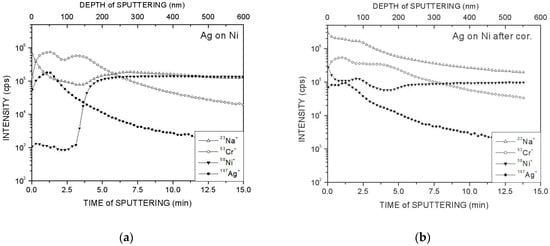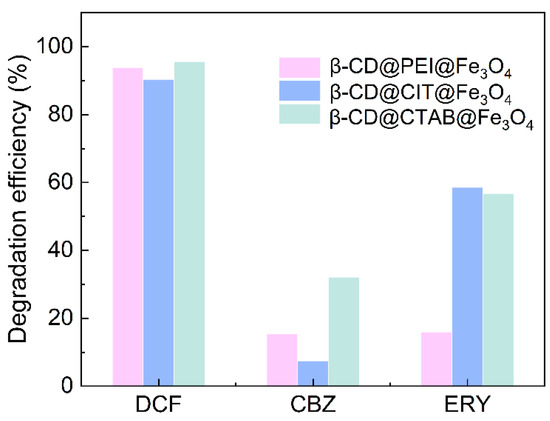Feature Paper Collection in Surface Characterization, Deposition and Modification
Share This Topical Collection
Editor
 Prof. Dr. Georgios Skordaris
Prof. Dr. Georgios Skordaris
 Prof. Dr. Georgios Skordaris
Prof. Dr. Georgios Skordaris
E-Mail
Website
Guest Editor
Laboratory for Machine Tools and Manufacturing Engineering, Mechanical Engineering Department, Aristotle University of Thessaloniki, Thessaloniki, Greece
Interests: coatings for cutting tools and machine elements; FEA modelling; superficial treatments; characterization of coated tool's strength, fatigue and adhesion properties
Special Issues, Collections and Topics in MDPI journals
Topical Collection Information
Dear Colleagues,
“Surface Characterization, Deposition and Modification” is one of the largest sections of Coatings. Since its inception, numerous papers have been published in this section. The scope of the “Surface Characterization, Deposition and Modification” section comprises various coating deposition processes and surface treatments, as well as microstructural/property characterization and performance studies of the modified or treated surfaces. Both experimental and theoretical studies are covered. Moreover, studies on the development of novel characterization devices that are specifically designed to evaluate the structural properties, amongst others, of modified surfaces are also welcome.
This Special Issue was established to present cutting-edge research findings, innovative approaches, and novel insights that contribute to a significant step forward in the quest for excellence in surface science and engineering.
Prof. Dr. Georgios Skordaris
Guest Editor
Manuscript Submission Information
Manuscripts should be submitted online at www.mdpi.com by registering and logging in to this website. Once you are registered, click here to go to the submission form. Manuscripts can be submitted until the deadline. All submissions that pass pre-check are peer-reviewed. Accepted papers will be published continuously in the journal (as soon as accepted) and will be listed together on the collection website. Research articles, review articles as well as short communications are invited. For planned papers, a title and short abstract (about 100 words) can be sent to the Editorial Office for announcement on this website.
Submitted manuscripts should not have been published previously, nor be under consideration for publication elsewhere (except conference proceedings papers). All manuscripts are thoroughly refereed through a single-blind peer-review process. A guide for authors and other relevant information for submission of manuscripts is available on the Instructions for Authors page. Coatings is an international peer-reviewed open access monthly journal published by MDPI.
Please visit the Instructions for Authors page before submitting a manuscript.
The Article Processing Charge (APC) for publication in this open access journal is 2600 CHF (Swiss Francs).
Submitted papers should be well formatted and use good English. Authors may use MDPI's
English editing service prior to publication or during author revisions.
Keywords
- coatings
- deposition methods
- surface engineering
- surface characterization
- applications
Published Papers (2 papers)
2024
Open AccessBrief Report
Application of Secondary Ion Mass Spectrometry for Analysis of Decorative Coatings on Fancy Goods Accessories
by
Tushagu Abudouwufu, Yueqiang Lan, Bin Han, Dejun Fu and Alexander Tolstoguzov
Viewed by 325
Abstract
The results of a secondary ion mass spectrometry (SIMS) study on Ag and ZrN decorative coatings on nickel and white bronze substrates for fancy goods accessories are presented. It was found that for Ag coatings, an intense diffusion of Cr from the adhesion
[...] Read more.
The results of a secondary ion mass spectrometry (SIMS) study on Ag and ZrN decorative coatings on nickel and white bronze substrates for fancy goods accessories are presented. It was found that for Ag coatings, an intense diffusion of Cr from the adhesion layer between the coating and the substrate is observed, and corrosion testing in an acetic salt (CH
3COOH+NaCl) atmosphere leads to the almost complete degradation of such coatings. ZrN coatings on white bronze turned out to be the most resistant to Cr diffusion and corrosion processes.
Full article
►▼
Show Figures
Open AccessArticle
Insights into the Ligand Effect in β-CD@Fe3O4 Composites to Activate Peroxymonosulfate for Efficient Degradation of Pharmaceutical Contaminants: A Study Employing Density Functional Theory
by
Xi Quan, Pengzhao Lv, Linlin Yin, Wei Zuo, Yu Tian and Jun Zhang
Viewed by 398
Abstract
This study presents a detailed investigation into the use of β-cyclodextrin (β-CD) encapsulated iron oxide nanoparticle (β-CD@Fe
3O
4) composites, modified with different ligands, to activate peroxymonosulfate (PMS) for the degradation of pharmaceutical contaminants, namely, diclofenac, carbamazepine, and erythromycin. The focus
[...] Read more.
This study presents a detailed investigation into the use of β-cyclodextrin (β-CD) encapsulated iron oxide nanoparticle (β-CD@Fe
3O
4) composites, modified with different ligands, to activate peroxymonosulfate (PMS) for the degradation of pharmaceutical contaminants, namely, diclofenac, carbamazepine, and erythromycin. The focus is on understanding the ligand effect, particularly using citric acid (CIT), polyethyleneimine (PEI), and cetyl trimethyl ammonium bromide (CTAB), on the degradation performance of these composites. Employing density functional theory (DFT) calculations, this work examines the electronic structure and charge distributions of β-CD@Fe
3O
4 composites, providing insights into their interaction with various pollutants. The study reveals that the β-CD@PEI@Fe
3O
4 composite demonstrates superior degradation efficiency due to optimal electrostatic interactions, regardless of the pollutant’s hydrophobicity. On the other hand, β-CD@CIT@Fe
3O
4 shows moderate efficiency, and β-CD@CTAB@Fe
3O
4 exhibits selective efficiency, particularly for hydrophobic compounds. These findings underscore the significant role of surface chemistry in modulating the activation of PMS and the degradation of contaminants, opening avenues for designing tailored β-CD composites for environmental remediation.
Full article
►▼
Show Figures







